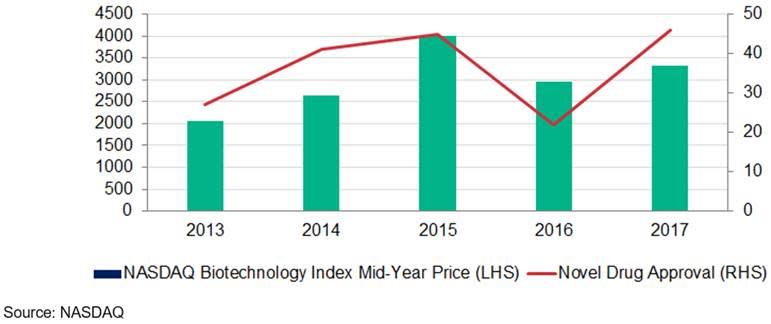business resources
Demographic Shifts Create Biotechnology Opportunities
8 Sept 2022, 2:15 am GMT+1
Globally, populations are rapidly growing, ageing and becoming richer. It is estimated that within 25 years, the number of over 65s in Asia will exceed the total populations of the eurozone and US combined.1 This progression, accompanied by declining birth rates in the developed world, is creating a growing demographic imbalance. Simultaneously, incomes are rising in developing economies, so emerging market consumers are increasingly entering the global middle class. When populations become wealthier, healthcare spending infallibly increases and pockets of new healthcare needs (in response to lifestyle changes) often emerge. The consequences of these demographic shifts – both current and emerging – include far greater pressures on healthcare and a greater reliance on the private sector to provide care solutions. Against this backdrop, biotechnology (or biotech) businesses can minimise the strain of (and theoretically profit from) global demographic adjustment. The biotech sector is broad-based, but primarily seeks to improve healthcare and treat disease through clinical research and drug development. Crucially for long-term investors, the sector also benefits from the relatively non-discretionary nature of demand for its products and services.
Harnessing the link between biotechnology and population change
Our portfolios have been taking explicit advantage of these opportunities since 2016, when we began investing in an actively managed healthcare and biotech investment trust. We see high growth potential and strong structural tailwinds in the industry, and have since added to our exposure through a passive ETF (exchange traded fund) tracking the NASDAQ Biotechnology Index. Having fallen sharply between late 2014 and 2016, the NASDAQ Biotechnology Index has been tracking steadily upward ever since. Despite its considerable growth potential and solid performance since 2017, the sector continues to trade at relatively attractive valuations; since the 2014-2016 selloff, the sector’s price-to-earnings ratio has languished below that of the broader market for the first time in history. As any excess capital is generally reinvested into further research and development, the majority of returns from the biotech sector are driven by M&A (mergers and acquisitions) activity and – crucially – the number of new drug approvals in a given year. The latter is positive news for investors, as approvals are on track for near record levels in 2018, backing up strong years in 2015 and 2017.
 The relationship between new drug approvals and the value of the NASDAQ Biotechnology Index
The relationship between new drug approvals and the value of the NASDAQ Biotechnology Index
For the sector’s world leaders in the US, biotech activities are tightly regulated by the Food and Drugs Agency (FDA). However, in a characteristically controversial manoeuvre, President Trump recently found himself on the biotech frontline when signing the ‘Right-to-try’ law – legislation permitting terminally ill patients to bypass the FDA to gain faster, unhindered access to experimental treatments. While not universally supported, and not without ethical constraints, the act should widen the pipeline of information on the effectiveness of potential new treatments. In turn, this could accelerate decision making over the fate of these new drugs.
Moderating risk through active management and diversification
As with all sectors, biotech has its weaknesses. The most commonly highlighted risks are the binary nature of research results and the subsequent high beta price movements in individual companies. More recently, political pressure to address fears around drug pricing is also mounting. Mindful of these risks, but also seeking to harness biotech’s many compelling opportunities, our diversified positioning aims to limit the portfolios’ exposure to stock-specific risk, while allowing access to the benefits of powerful demographic shifts.
This is an article provided by our partners’ network. It might not necessarily reflect the views or opinions of our editorial team and management.
Share this
Contributor
Staff
The team of expert contributors at Businessabc brings together a diverse range of insights and knowledge from various industries, including 4IR technologies like Artificial Intelligence, Digital Twin, Spatial Computing, Smart Cities, and from various aspects of businesses like policy, governance, cybersecurity, and innovation. Committed to delivering high-quality content, our contributors provide in-depth analysis, thought leadership, and the latest trends to keep our readers informed and ahead of the curve. Whether it's business strategy, technology, or market trends, the Businessabc Contributor team is dedicated to offering valuable perspectives that empower professionals and entrepreneurs alike.
previous
British Government Kicking Off the Start of Green Business Vehicles
next
Time To Say Goodbye... When Should You Sell Your Business?